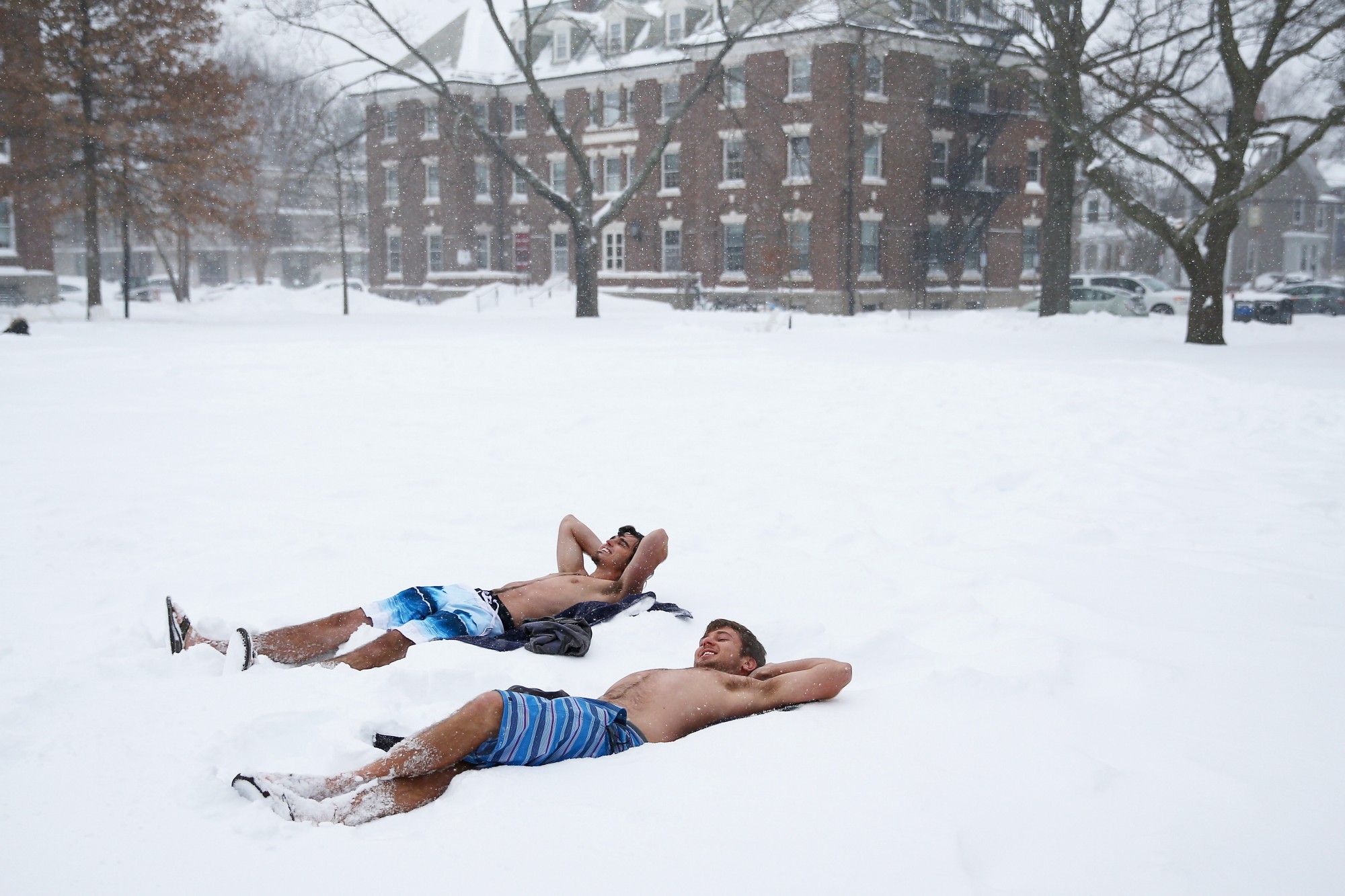
Elif Batuman’s new novel, The Idiot, centers on two undergraduate lovers who, for all their mutual affection, cannot muster the nerve to kiss. Reviewing the novel in The Millions, Kris Bartkus observed, “At a time when sex is the starting point rather than the goal of most romantic relationships, we don’t have a rich phrasebook for understanding why two seemingly interested people fail at step one.” Indeed, it’s a situation so odd as to be, in our screen-tapping age of Tinder and free pornography, nearly implausible.
In Faith With Benefits: Hookup Culture on Catholic Campuses, Jason King, professor and chair of theology at St. Vincent College, helps us better understand why Batuman’s premise isn’t so weird. He reveals why many students avoid hooking up altogether, charting an “anti-hookup culture” that’s more prevalent than one might expect. At the same time, he explains why, when hook ups do happen, the encounter serves as a de facto starting point for potential long-term relationships. Finally, he explores the detrimental implications of a hook-up culture that appears to be more dominant than it really is. King’s research — which we discussed in a phone interview — reminds us that, when it comes to the interplay of undergraduate intimacy, matters are more and less complicated than they seem.
(For his book, King interviewed over 1,000 students at 26 Catholic colleges and universities, but his research draws on studies done in non-Catholic institutions as well.)
Students who leap headlong into casual, no-strings-attached sex are a minority. Just 20 percent of undergraduates hook up with any regularity (I’ll discuss the purposeful ambiguity of this term shortly, but for now just think sexual contact without commitment). They are busy, accounting for 75 percent of all campus hook-ups. This cohort shares similar characteristics. According to King, hook-up participants are “white, wealthy, and come from fraternities and sororities at elite schools.” With more safety nets in place than a trapeze artist, they are less averse to insouciant dalliance than their peers. In one study (not King’s), 20 percent of college students hooked up more than 10 times in a year. “They feel very safe doing it,” King says, “as if their potential for future success isn’t compromised.”
The motivation to hook up — almost always fueled by alcohol — is more complicated than seeking the cheap thrill of an intoxicated sexual encounter. According to King, most students who hook up do so with a specific, if muted, ambition in mind: To initiate a connection that might evolve into something more substantial. He classifies a “relationship hookup culture” as one where students hook up “as a way into relationships.” Most of those who hook up, he claims, fall into this category, one reified by the facts that 70 percent of students who hook up already know each other while 50 percent hook up with the same person repeatedly. Relationship hook-up culture, King notes, is most common on small, regional campuses.
Media reports often make college campuses out to be orgiastic dens of iniquity. But not only do most students not hook up, those who forgo the act often foster “a culture that exists in opposition to the assumed norm of stereotypical hookup culture.” King notes that students from lower economic strata, racial minorities, and members of the LGBTQ community tend toward this category. Reasons for undergraduate abstinence range from religious prohibitions to a sense that college is about hard work rather than hard play to a personal conscience that deems the hook up “not the right way to behave.” While religious campuses are least amenable to hook-up culture, a quarter of the students at Harvard University, that elite secular bastion, never had a single sexual interaction during their four-year tenure.
What concerns King, then, is not that a tsunami of casual sex is swamping America’s undergraduate population. Rather, it’s the perception that it is. When the hook-up activity of a few “becomes a norm, assumed to be what everyone on campus is doing and what everyone should want to do,” then “those who don’t hookup think of themselves as outsiders.” This fear of feeling ostracized helps account for the ambiguity of the term “hook-up.” When I asked King what exactly it meant, he laughed. “Students are clever,” he says. Those who do not engage in sexual intercourse but perhaps flirt or kiss could still pose for the “in group” by claiming, “Yeah, we hooked up.” “Fewer people are hooking up with intercourse,” King says, “but they want to preserve the term’s ambiguity.”
Hook-up culture’s perceived normality has additional detrimental consequences. Of particular concern, it ushers students into an assumed norm that can potentially endanger them. An element of hook-up culture is coercive. King has written, “Coercive hookup culture takes stereotypical hookup culture and attempts to legitimize the use of force in sexual activity.” The context where hook-up culture thrives doesn’t help. “Alcohol can make force seem more acceptable,” explains King, “while pornography can make coercion seem normal.” Relatedly, the more that the hook up becomes normalized, “all other alternatives get pushed out.” Students repeatedly claim “I want to go on dates,” but in a hook-up culture how to do so isn’t altogether clear. So the hook up becomes the default.
King isn’t convinced that it’s the job of university administrations to address the problems of hook-up culture’s perceived popularity. Instead, he encourages professors to help their students see what’s really happening on campuses. When I asked for an example, he mentioned a class taught at Boston University. The professor, Kerry Cronin, offered her students a rather unusual extra credit assignment: to go on a 45-minute date. Her advice? “The date should end with an A-frame hug: shoulders in, all genitalia out.” Corny as such a tip sounds, King’s research suggests most students might not object.





